Factors that Influence Job Changing: An Examination of Demographic Differences
During summer 2008 Research & Planning conducted a succession planning study of employees in the Wyoming Department of Family Services (DFS), the Wyoming Department of Employment (DOE), and the Wyoming Department of Workforce Services (DWS). The study sought to identify ways the agencies can prepare for the likelihood of a significant proportion of their workforce retiring. This can be accomplished in several ways, including identifying factors affecting the likelihood of job change, identifying ways to entice retirees back into the workforce, and training other employees to fill positions vacated by retirees.
The publication produced from this study, 2008 Succession Planning Report: A Survey of Employees (Ellsworth & Szuch, 2008), analyzed factors by agency in order to pinpoint possible differences in job satisfaction and employees' intent to leave. However, because demographic differences such as gender and age can have varying effects on job satisfaction and job leaving, it is also important to analyze responses by these categories in order to understand workplace dynamics separate from place of work. Job leaving, or turnover, has a number of negative effects on a workplace, including increased costs to fill open positions, lower employee morale, and decreased customer satisfaction. This article will identify differences in selected factors that may influence employees' stated intent to change jobs by age and gender. As discussed later in this analysis, results indicate that the most important factors in job changing, especially for younger workers, are those that improve the employee's financial well-being, such as higher wages, more opportunities for job advancement, and increased access to education and training.
MethodologyBeginning in May 2008, Research & Planning sent questionnaires pertaining to various aspects of job satisfaction and future work plans to employees of DFS, DOE, and DWS. One of the questions on this survey instrument was, "Even if you do not have definite plans for leaving your department, which of the following factors, if offered by a different employer, would lead you to take a job somewhere else?" Responses to this question included higher wages, better benefits, opportunities for advancement, and flexible scheduling. The question was intended to pinpoint factors that employees found important in their decision to change jobs, particularly if they were not planning to retire in the following 12 months. Employees may not actually leave because of any of these factors, but their answers provide insight into areas that could be improved, either among the agencies or at the state level, to increase tenure and job satisfaction.
This analysis contains a series of tables comparing the answers of employees by age or gender for the job-change factors. The tables include the number (N) and percentage (%) of workers who chose that option. The tables also include a number labeled frequency missing, which indicates nonresponse. This is the number of people who either did not answer that particular question or skipped that question based on instructions from a previous question. For example, a question on the survey asked respondents if they had previously retired from a state government position. If they answered yes, they were instructed to skip forward to another section rather than answer any more questions related to job satisfaction. To see more detail about the survey process for this project as well as response rates and copies of the survey instrument, go to http://doe.state.wy.us/LMI/SPR_08/cover.htm.
Response rates are important in research because the greater the percentage of responses received, coupled with an even response across age and gender groups, the more the results may be generalized to the population under study. Mailed questionnaires typically result in a response rate of 50% to 80% (Dillman, 1978). Overall, 75.5% (986; see Table 1) of employees in the three agencies of interest returned usable copies of the succession planning questionnaire. By agency, 71.2% (545) of DFS employees, 81.1% (245) of DOE employees, and 82.0% (196) of DWS employees responded. As the following discussion details, because the demographic makeup of the employees in these three agencies differs significantly from that of all state government and all industries in Wyoming, these results may be generalized only to the agencies surveyed.
During 2007, more than one-fifth (22.7%; see Table 2) of workers in all private and public industries within the state were nonresidents whose gender was not known. Because nonresidents were far less likely to be employed in state government (5.1%), they were set aside for purposes of this discussion. Among the remainder of workers in all industries, 46.4% were women and 53.6% were men. Similarly, in total government, 46.9% were women and 53.1% were men. In comparison, 76.8% (see Table 3) of survey respondents in DFS, DOE, and DWS were women and only 23.2% were men.
With nonresidents removed (see Table 4), 40.6% of workers in all industries were younger than age 35, 41.4% were between 35 and 54, and only 17.9% were age 55 and older. Workers in total government were also comparatively young, with 29.1% younger than 35, 47.8% between 35 and 54, and 23.1% age 55 or older. However, within DFS, DOE, and DWS, only 16.9% (see Table 5) of respondents were younger than 35, while more than half (52.9%) were between age 35 and 54 and nearly a third (30.3%) were age 55 or older. Overall, the employees in these agencies were older than the state's workforce as a whole at the time of the study.
To identify differences among demographic groups in the factors that would influence their decision to change jobs, the chi-square statistic was used. The chi-square statistic helps to determine whether the distributions of categorical variables differ from each other. It is essentially the measure of distance between the observed and expected responses. In this case, we expected the responses from the individual agencies to look the same as the total from all three. This statistic is used to calculate a p-value, or probability, which tells us if these differences are statistically significant. Any p-value that is less than or equal to 0.05 is considered statistically significant, indicating that there is a statistically real difference that is not due to chance. This is important as it may give agency heads insight into issues that are specific to their own departments, which, if altered, may increase employee satisfaction and tenure.
AnalysisSeveral factors showed statistically significant differences among the three age categories. As shown in Table 6 (p≤0.0001), an offer of higher wages appeared to be more important to younger workers than older workers. Nearly all employees younger than age 35 (94.3%) indicated they would consider changing jobs if offered higher wages. In comparison, only 74.7% of those older than age 55 indicated that this factor would influence their decision to change jobs. The results were similar when the data were analyzed by age and gender (p=0.0001; see Table 7, and p=0.0001; see Table 8). A slightly greater proportion of males (96.6%) than females (93.8%) in the younger than age 35 category marked higher wages as a reason for deciding to change jobs. However, a smaller percentage of male employees (70.8%) than females (76.0%) age 55 and older chose this factor.
Increased opportunities for career advancement was another factor that showed statistically significant differences among age groups (p≤0.0001; see Table 9). Overall, the proportion of employees younger than age 35 who chose this factor was nearly double (66.9%) that of employees age 55 or older who chose this option (35.7%). As with wages, this factor was also statistically significant when analyzed separately by age and gender (p=0.0005; see Table 10, and p≤0.0001; see Table 11). A greater proportion of male employees younger than age 35 (75.9%) indicated they would change jobs for advancement opportunities than did female employees in that age group (64.8%). Approximately half of male (46.4%) and female (54.4%) employees between age 35 and 54 chose this option, along with only approximately one-third of both male (32.3%) and female (37.2%) employees age 55 or older.
Increased access to training and educational opportunities also had statistical significance when analyzed by age and gender (p=0.0002; see Table 12). As with wages and advancement opportunities, access to education and training was more important to younger workers (45.2%) than to those age 35 to 54 (36.1%) or 55 and older (25.7%). This factor was not statistically significant for male employees (p=0.0575; see Table 13) but was for female employees (p=0.0038; see Table 14).
Finally, increased recognition showed statistically significant differences among age categories (p=0.031; see Table 15). A greater proportion of employees younger than age 35 chose this factor as one that would influence their decision to change jobs (31.9%) compared to employees age 35 to 54 (22.5%) and age 55 and older (21.3%). There were no statistically significant differences for this variable when analyzed by gender and age (see Table 16 and Table 17).
DiscussionTurnover is very costly to an employer, not only monetarily but also in terms of the effect it has on employee morale and customer satisfaction. Some studies have estimated that the cost of replacing an employee can be $50,000 or more due to such things as advertising and recruiting, lost productivity, and time spent on training a new employee (Abbasi & Hollman, 2000). There are other costs as well, especially within DFS, DOE, and DWS. It takes time for new employees to gain knowledge about systems and procedures. In addition, the public may not obtain the level of benefits or care to which they are entitled, and receiving these benefits may take more time than it would if the employee had more experience.
Turnover also increases the burden on other employees in the agency, potentially causing them to pick up extra work while a position is being filled. Past research (Knapp, 2008a) on workplace satisfaction within DFS, DOE, and DWS has shown that some employees already feel overworked. Extra work added to an already full load may increase dissatisfaction. Because of these effects, it may be prudent for employers to identify the causes of workplace satisfaction and try to improve it.
Turnover is often affected by workplace satisfaction. If employees are dissatisfied with some aspect of their work environment, they are more apt to seek employment elsewhere. Many things have an effect on job satisfaction, such as management attitudes and workplace recognition, as well as compensation. As the preceding analysis has shown, these appear to be important factors to employee-stated intent to leave among DFS, DOE, and DWS employees, particularly among younger employees.
Overall, the factors that showed statistically significant differences did so for the youngest age group. Wages, advancement opportunities, and education were found to be more important to this group than to the older age groups. These three factors may be more important to younger workers because they are ways to improve one's financial well-being. Younger workers generally start in entry-level jobs. Changing jobs for an increase in wages has an obvious effect on a worker's financial status, but changing jobs for increased access to education and training opportunities may also improve a worker's chances for advancement. For this, however, advancement opportunities must be available. The perceived lack of these advancement opportunities within the state government system was a common theme among respondents to the succession planning questionnaire (see http://doe.state.wy.us/LMI/SPR_08/cover.htm). It should be noted, though, that increased access to training opportunities was only statistically significant to female employees when analyzed by age, so it may be that training opportunities hold a greater level of appeal for female employees in these agencies.
Employees in the younger age group were also more likely to feel that more recognition for their work would encourage them not to change jobs. Recent research indicates that this is a trait typical to Generation X employees as a whole. In fact, one of the top complaints of employees in this generation is that there is a "lack of consistent feedback or recognition when it's due" (O'Bannon, 2001, p. 95).
Several factors did not show statistically significant differences when analyzed by age and gender, including benefits, better staffing, flexible scheduling, increased autonomy, and more respect from management (to see the statistical outputs for these variables, go to http://doe.state.wy.us/LMI/SPR_08/appB.htm). This does not mean the factors were not important in the process of deciding to change jobs; rather, they were not more important to any one age group or gender. For example, although better staffing did not show statistically significant results for any one age group or gender, future research may find that there are statistically significant differences among departments as to the influence this factor has on the likelihood an employee would decide to change jobs.
Only workers in the youngest age group showed statistically significant results for any of the questionnaire factors regarding influence on a decision to change jobs. However, part of the goal of succession planning is to retain older workers who have experience and greater job knowledge. While not statistically significant, a large proportion of employees age 55 and older in DFS, DOE, and DWS also chose wages, advancement opportunities, and recognition as factors that would influence their decision to leave. Past research conducted on nurses found that older nurses most often indicated that they would leave their jobs for retirement (Harris & Jones, 2008); this is possibly the case with state workers as well. If so, retention efforts for workers in the oldest age group should focus on what might entice the worker to return to work post-retirement. Analysis of the succession planning data has already shown that employees were most interested in part-time work after retirement (Knapp, 2008b); consequently, programs that involve job sharing or shortened work weeks may be viable options. This is an area for future research.
ReferencesAbbasi, S.M., & Hollman, K.W. (2000). Turnover: The real bottom line. Public Personnel Management, 29(3), p. 333-342.
Dillman, D.A. (1978). Mail and telephone surveys: The total design method. New York: Wiley.
Ellsworth, P., & Szuch, A. (Eds.). (2008). 2008 succession planning report: A survey of employees. Retrieved December 29, 2008, from http://doe.state.wy.us/LMI/SPR_08/cover.htm
Harris, M.A., & Jones, S.D. (2008). Why age is important. In P. Ellsworth & A. Szuch (Eds.), Retention of nurses in Wyoming (pp. 37-40). Retrieved December 29, 2008, from http://doe.state.wy.us/LMI/nursing_retention_08.pdf
Knapp, L. (2008a). Chapter 4: Workplace satisfaction. In P. Ellsworth & A. Szuch (Eds.), 2008 succession planning report: A survey of employees. Retrieved December 22, 2008, from http://doe.state.wy.us/LMI/SPR_08/satisfaction.htm
Knapp, L. (2008b). Chapter 8: Intentions to work after retirement. In P. Ellsworth & A. Szuch (Eds.), 2008 succession planning report: A survey of employees. Retrieved December 29, 2008, from http://doe.state.wy.us/LMI/SPR_08/retire.htm
O'Bannon, G. (2001, Spring). Managing our future: The Generation X factor. Public Personnel Management, 30(1), p. 95.
Return to text

Return to text

Return to text
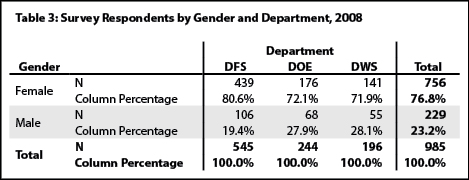
Return to text
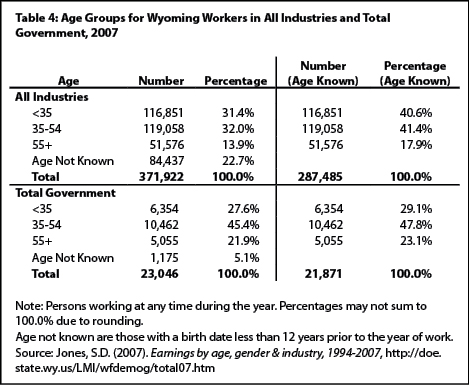
Return to text

Return to text

Return to text
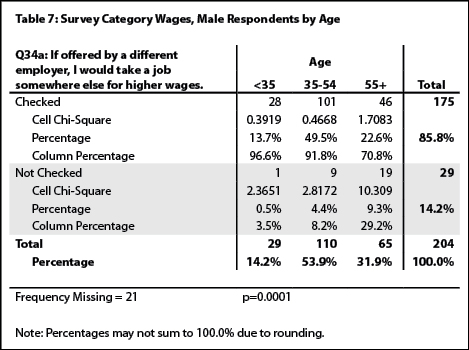
Return to text
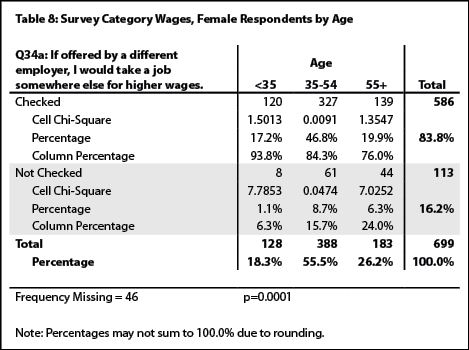
Return to text
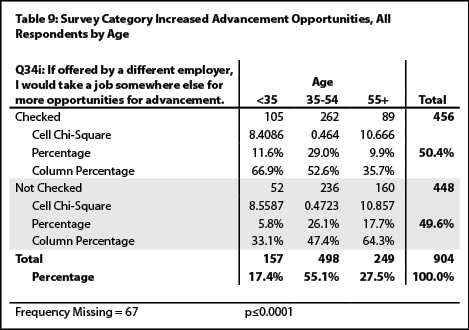
Return to text
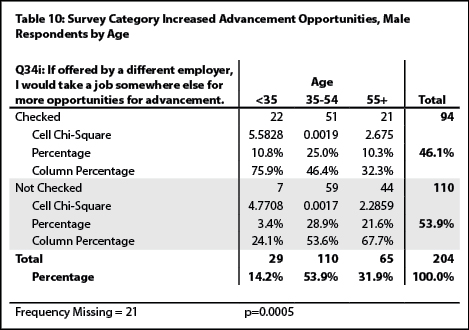
Return to text
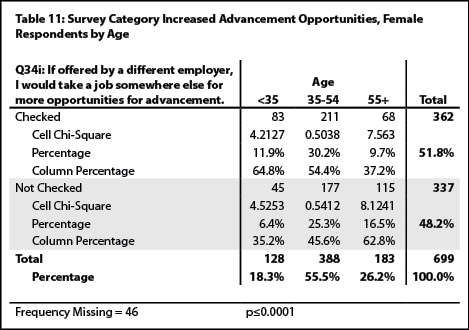
Return to text
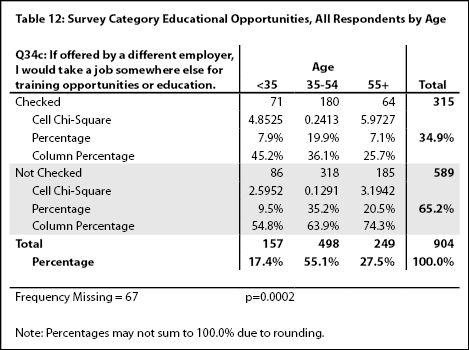
Return to text

Return to text
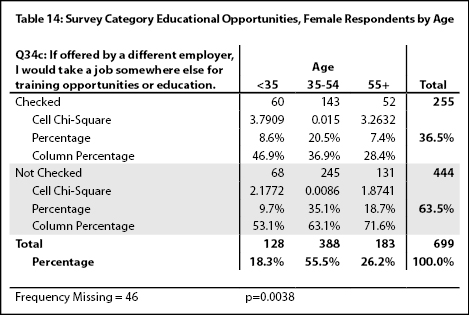
Return to text

Return to text
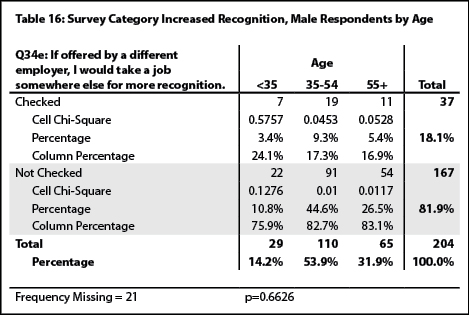
Return to text

Last modified on
by April Szuch.
